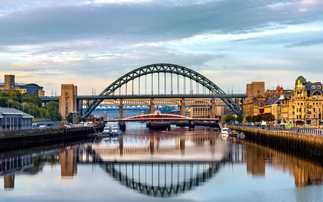Our planet is in trouble. We can no longer ignore the reality that our climate is changing and that biodiversity is collapsing.
Our planet is in trouble. We can no longer ignore the reality that our climate is changing and that biodiversity is collapsing. On top of that, we have yet to adequately manage the pandemic that has been afflicting us since early 2020. It's vital to act now: the longer we wait, the bigger the trouble ahead.
I believe that investors need to lead in this crisis. In fact, one of the biggest risks for asset owners and managers is not seeing the opportunity to transform towards a more sustainable planet. Sustainability is now a key driver of innovation: the search for solutions to climate change, in particular, is driving technological innovation at an unprecedented rate. If investors don't seize such opportunities by investing in sustainable innovations, they will not only hurt their own bottom line. They will also fail to support the solutions that can reverse the tide and get our planet out of trouble.
A climate roadmap
The single most important issue for investors should be how we can have real-world, sustainable impact. I believe there are three priorities in this regard.
First, it's critical that we scale sustainable investing. Sustainable investing must become mainstream in order to be a force that helps drive the transformation towards more sustainable and resilient societies.
Despite the surge in the number of ESG and impact funds on the market, our work is not yet done. For every fund that integrates sustainability criteria, there are many more that don't. This presents a challenge: although investors are increasingly steering capital towards sustainable firms, plenty of financing is still going to companies that have an adverse environmental and social impact. It means that, rather than treating sustainable investing as niche, we must go all in and make it the standard way of doing business.
Our second priority is to innovate. If we are to achieve the goal of making sustainable investing mainstream, we must come up with innovative ways to integrate sustainability into different asset classes. Today, the main focus remains on listed equity. Fixed income, particularly credits, is following, but surveys show that sustainability integration in this asset class is at an early stage.
That means that there is a world to gain for sustainable investing. If we succeed in creating innovative ways for integrating sustainability across different types of asset classes - particularly sovereign debt - then we will see many more opportunities to make a positive impact.
The third priority is impact. Here, we still see many unknowns: how can we measure the impact of companies on societies and the environment? Is ESG a good indicator of impact or do we need better metrics that focus more on the goods and services that companies deliver rather than focusing on their operations? And which metrics can indicate whether companies will successfully increase their impact in the future?
We are tackling these challenges through research and by creating new products. We have, for example, created a proprietary SDG Framework that enables us to assess what impact companies have on each of the SDGs - and with this framework we create investment strategies that invest in companies that have a positive impact. We have also launched two innovative climate-focused fixed income strategies, which are fully compliant with the EU benchmark regulation for Paris-aligned investments. As such benchmarks are not yet readily available to the market, we innovated - and developed these indices by working with a specialist in this area.
Ultimately, sustainable investing must be about impact - and there is a great deal more good work to be done here.
Overcoming the obstacles to ensure we have impact
These are very complex challenges and this complexity is to be embraced rather than avoided. This requires us to have a much better understanding of what we are dealing with and what the consequences are. There is much work to be done to understand how investments influence climate change and especially biodiversity loss, and vice versa.
It also requires us to act together as an industry. No sustainability challenge will be solved if we do not act collectively. A planet that is safe and healthy can only exist if sustainable investing becomes run of the mill rather than the exception.
We need to just do it. Yes, it is complex and will take time. But we no longer have the luxury of waiting until all the unknowns are known and we have mastered all the complexity. We understand more than enough today to roll up our sleeves and get moving. Now.
Are you interested in more expert views on climate change, its impact, and the solutions for moving to a carbon-neutral society? Stay informed with our new series of articles, research papers, videos and webinars about this vital issue.









